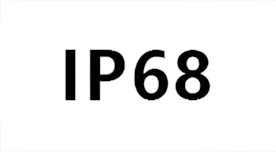I. Composition of the IP Grade
The IP grade is composed of two digits. The larger the digits, the higher the protection level. For example, IP68 indicates a higher protection level than IP54.
- The first digit: indicates the protection level against solid foreign objects.
- 0: No protection.
- 1: Prevents the entry of solid foreign objects with a diameter greater than 50mm.
- 2: Prevents the entry of solid foreign objects with a diameter greater than 12.5mm.
- 3: Prevents the entry of solid foreign objects with a diameter greater than 2.5mm.
- 4: Prevents the entry of solid foreign objects with a diameter greater than 1.0mm.
- 5: Dust-proof. It cannot completely prevent dust from entering, but the amount of dust that enters shall not affect the normal operation of the equipment.
- 6: Dust-tight. Completely prevents dust from entering.
- The second digit: indicates the protection level against liquids.
- 0: No protection.
- 1: Prevents water dripping vertically.
- 2: Prevents water dripping vertically when the enclosure is tilted at an angle of 15°.
- 3: Prevents water spraying within an angle range of 60° from the vertical direction.
- 4: Prevents water splashing from any direction.
- 5: Prevents water jetting from any direction.
- 6: Prevents strong water jetting.
- 7: Prevents the influence of short-term water immersion.
- 8: Prevents the influence of continuous submersion.

II. Application of the IP Grade
The IP grade is widely applied to various electrical equipment, such as mobile phones, cameras, lighting fixtures, electrical distribution boxes, etc. Different application scenarios require different IP grades.
- Outdoor equipment: Usually requires a relatively high IP grade to prevent the intrusion of dust, rainwater, water splashes, etc. For example, outdoor lighting fixtures generally require a protection grade of above IP65.
- Underwater equipment: Such as diving lights, underwater cameras, etc., require an IP68 protection grade to ensure that they are not affected by water during long-term operation underwater.
- Electronic devices: Electronic products such as mobile phones and tablets usually require an IP67 or IP68 protection grade to prevent damage caused by accidental water immersion.
III. How to Determine the IP Grade
- Check the product instruction manual: The IP grade of the equipment is usually indicated in the product instruction manual.
- Check the product marking: Some equipment is marked with the IP grade, which can be directly viewed.
- Conduct tests: Professional testing institutions can be employed to conduct IP grade tests on the equipment to determine its actual protection capability.


